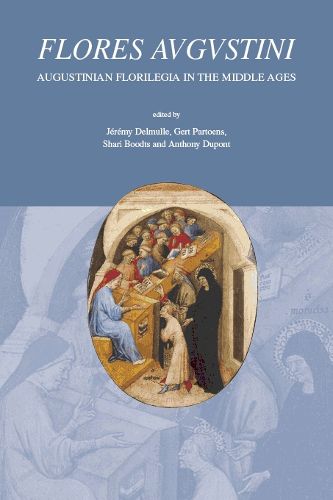Readings Newsletter
Become a Readings Member to make your shopping experience even easier.
Sign in or sign up for free!
You’re not far away from qualifying for FREE standard shipping within Australia
You’ve qualified for FREE standard shipping within Australia
The cart is loading…






Augustine of Hippo was one of the first authors to give rise to the need
for anthologies devoted to a single author. Today, over a hundred
florilegia dedicated solely to Augustine’s writings are known. Over the
course of the Middle Ages, several of these collections proved
instrumental in giving access to the Bishop of Hippo’s large oeuvre, and
in determining the direction of its reception.
In fourteen
chapters, this volume presents some important Augustinian florilegia,
their sources, composition, context, afterlife, and the challenges
inherent in editing and studying them. Beginning in Late Antiquity, with
Vincent of Lerins and Prosper of Aquitaine, the volume discusses several
medieval and early modern florilegia, both well-known and more marginal,
and concludes with their use by Augustine’s modern editors. As such,
this book contributes to a better understanding of the reception of
Augustine throughout the Middle Ages and to the ways in which his
exceptional auctoritas took shape.
$9.00 standard shipping within Australia
FREE standard shipping within Australia for orders over $100.00
Express & International shipping calculated at checkout
Augustine of Hippo was one of the first authors to give rise to the need
for anthologies devoted to a single author. Today, over a hundred
florilegia dedicated solely to Augustine’s writings are known. Over the
course of the Middle Ages, several of these collections proved
instrumental in giving access to the Bishop of Hippo’s large oeuvre, and
in determining the direction of its reception.
In fourteen
chapters, this volume presents some important Augustinian florilegia,
their sources, composition, context, afterlife, and the challenges
inherent in editing and studying them. Beginning in Late Antiquity, with
Vincent of Lerins and Prosper of Aquitaine, the volume discusses several
medieval and early modern florilegia, both well-known and more marginal,
and concludes with their use by Augustine’s modern editors. As such,
this book contributes to a better understanding of the reception of
Augustine throughout the Middle Ages and to the ways in which his
exceptional auctoritas took shape.